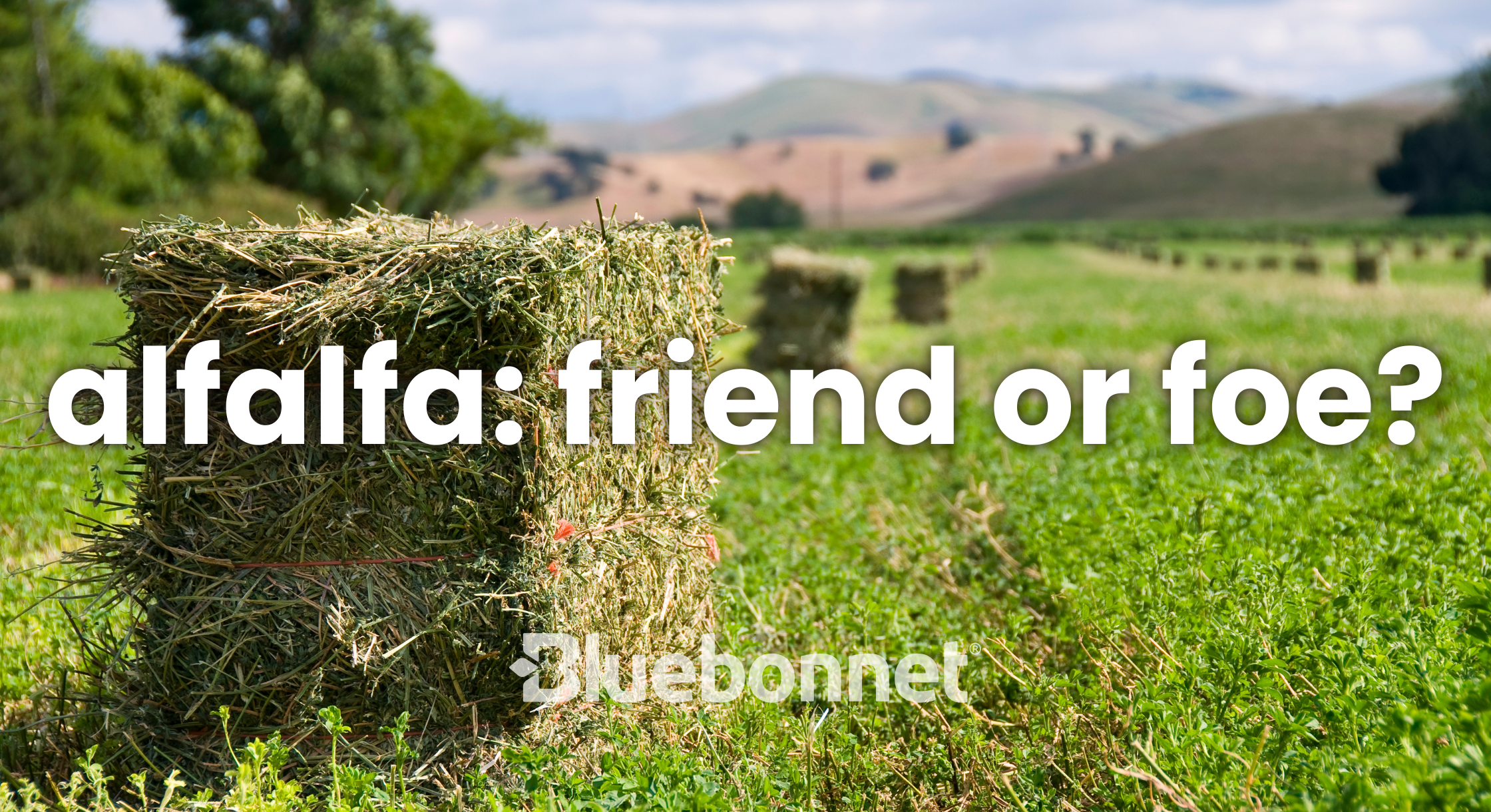
Most conversations about alfalfa are loaded with misconception. In some parts of the country, the leafy green legume is readily available and commonly fed to horses. In other parts, it is a luxury. In some circles, it’s an essential staple, and in others, it’s completely off limits. Like most things, there is a time and place for alfalfa, depending on your horse’s needs.
Forage for horses can be divided into two categorie–grasses and legumes. Grass hay species typically fed to horses include timothy, orchardgrass, and bermudagrass. Common legumes are clover and alfalfa. Relative to one another, grass hays are typically lower in protein, lower in calories, and require more effort by the digestive tract to extract nutrition. In contrast, alfalfa is more concentrated in protein and calories, and is more easily digested. Keeping these factors in mind will help determine when alfalfa should be used or avoided.
Alfalfa as a Friend
The best place to implement alfalfa is in the diet of young growing horses and lactating mares. These two groups of horses have the highest need for protein, amino acids, and calories–all of which are abundant in alfalfa. Hard keepers, senior horses, or horses in high intensity training programs may also benefit from alfalfa’s highly concentrated nutrient profile. These horses may not need a pure alfalfa diet but feeding a mixture (i.e. 50% alfalfa and 50% grass hay) can provide a big benefit.
Alfalfa as a Foe
Alfalfa should not be fed to horses with a tendency to become overweight. Since alfalfa is more concentrated in calories and is easily digested, “easy keepers” may begin to impersonate the Goodyear Blimp if offered too much alfalfa! Alfalfa may also have negative implications in horses that suffer from Exercise Induced Pulmonary Hemorrhage (commonly termed “bleeders”). Here’s why--if the diet contributes more protein than the horse requires, the excess is broken down into urea and excreted in the urine (this is evident by the ammonia smell). Ammonia fumes inhaled repeatedly over time can cause irritation in the airway which may cause the horse to bleed when exercised at high intensity. **Note: the root cause is excess protein in the diet, not alfalfa itself. Excess protein can also come from unnecessary amounts of grain and supplements.
General Rules
One mistake people often make is avoiding alfalfa for horses with sugar sensitivities (such as PSSM, commonly termed “tying-up”). Alfalfa is typically lower in sugar than most grass hays. It’s important to note that time of harvest plays a major role in sugar content. The best policy if you have a sugar-sensitive horse is to test the carbohydrate content of your hay supply, and consult with an equine nutritionist.
Horses who are ridden very little (or not at all) should not be fed alfalfa. Instead, these horses do best on grass hay diets because that aligns better with their nutritional needs. As horses enter training or move into more frequent or intense riding programs, alfalfa is an excellent addition to support the increasing nutritional requirements. Alfalfa may even be a good alternative to adding extra grain. If using alfalfa as a grain replacement, a low protein Diet Balancer should be offered to supply trace minerals and balance important ratios such as calcium and phosphorus. In conclusion, seeking out an equine nutrition consultant can help determine whether alfalfa is right for your horse.

